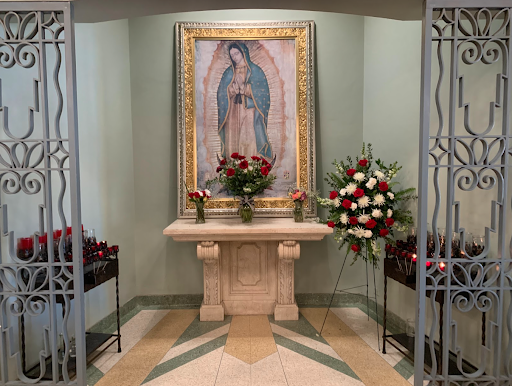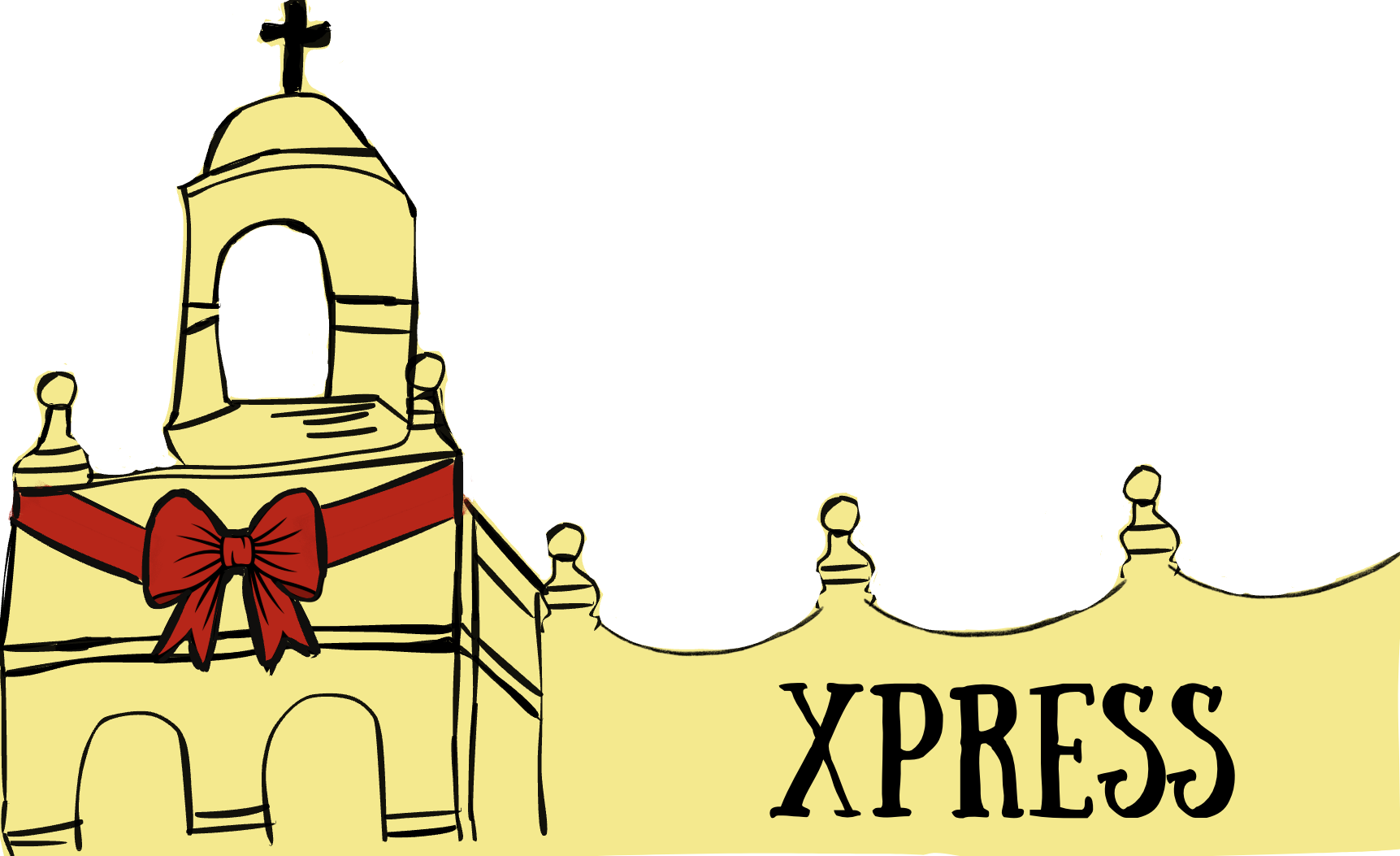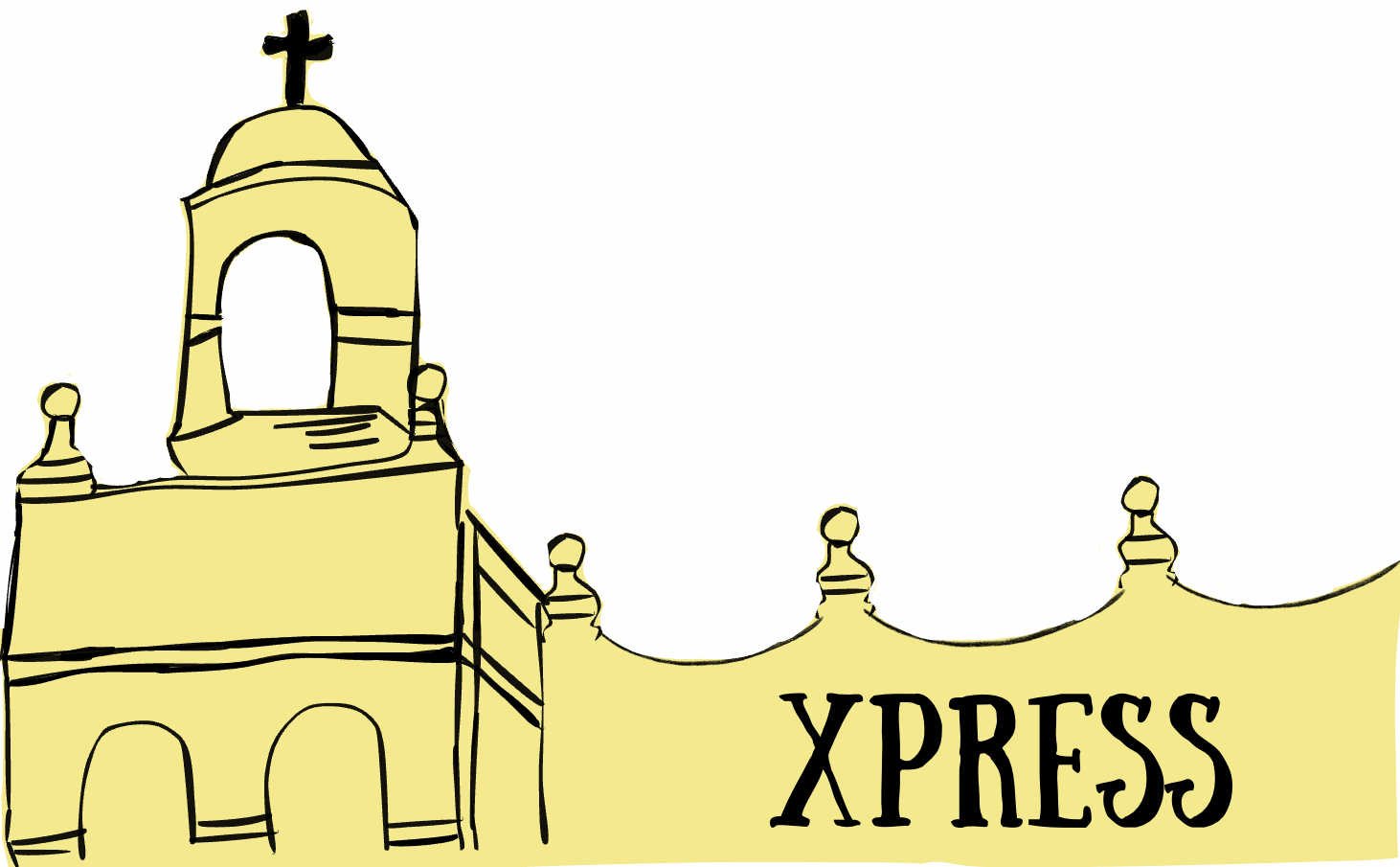Common misconceptions about Mary

Parishioners pray for Mary’s intercession at the altar rail anytime that the Saint Francis Xavier Church is open. The Art and Environment volunteer ministry placed the flower arrangements by Mary’s Altar, next to the painting of Mary in a blue cloak representing her purity.
As a Roman Catholic School, Xavier College Preparatory includes in its theological teaching that it is important to look to Mary as the Virgin Mary and the Queen of Heaven.
While other churches may not accept the four Marian Dogmas that include the Immaculate Conception, the Perpetual Virginity of Mary, the Assumption and Mary as the Mother of God, for Catholics these are at the core of their catechism.
The Pope’s infallibility or the ability to declare something without error was used for two of the dogmas: the Immaculate Conception and the Assumption.
These were the “only times that papal infallibility has ever been officially invoked. Papal infallibility is only used in very serious things,” said Katrina Winn, director of youth ministry at Saint Francis Xavier Parish.
One Marian dogma that many find hard to understand is that Mary was born without original sin. “She may be free from original sin, but she is not free from the pain and suffering caused by the sin of others,” said Winn.
Since Catholics believe the dogma that Mary was free of sin from the moment of her conception, she would be the perfect woman to bear Jesus in her womb.
Her fiat, or her “yes” to God’s plan, is one of the many reasons why Catholics see Mary as a role model who “never denied God the least sign of love,” said Father Kevin Dilworth, a professor at Creighton University and an attendant on Xavier Lourdes trips.
Many people may see Catholics as “worshiping Mary or saints” because of the many statues in their Churches, but this is not the case.
“It is through images and signs, or sacraments, that God’s grace is conveyed to us, and so the Eucharist is a visible sign of God’s grace. From that we get the whole tradition of art, sacred architecture, and yes, statuarity,” said Geoffrey Stricklin, Xavier freshman theology teacher.
Catholics use Mary and the saints to ask for their intercessions. When praying to Mary or the saints, it is not a prayer of worship, but one of honor and reverence.
The miracles of several Marian apparitions have only fortified Catholics’ devotion to praying for her intercession. As is recorded in history, Mary has appeared to humanity in times of need.
Apparitions of Our Lady of Guadalupe in Mexico approved by Pope Leo XIII, Our Lady of Fatima accepted by Pope Pius XII and Our Lady of Kibeho approved by the Vatican have all been vital to Catholics.
Catholics pray the rosary to reflect on the mysteries that “all recount different events in Jesus’ life and the recitation of the Hail Mary allows them to focus their minds on these various events,” said Winn.
“When we pray the rosary, we are contemplating Jesus with Mary. People think that the Hail Mary is some random prayer, but it is very scriptural,” said Danielle Burr, sophomore theology teacher, and coordinator of Kairos retreats at Xavier.
The term “Hail” comes from the Annunciation when the Angel Gabriel announced that Mary would bear the Son of God.
“The Virgin Mary is probably the perfect role model for both young women and men in how we are challenged to live our lives in openness to God’s call to us,” said Dilworth.



